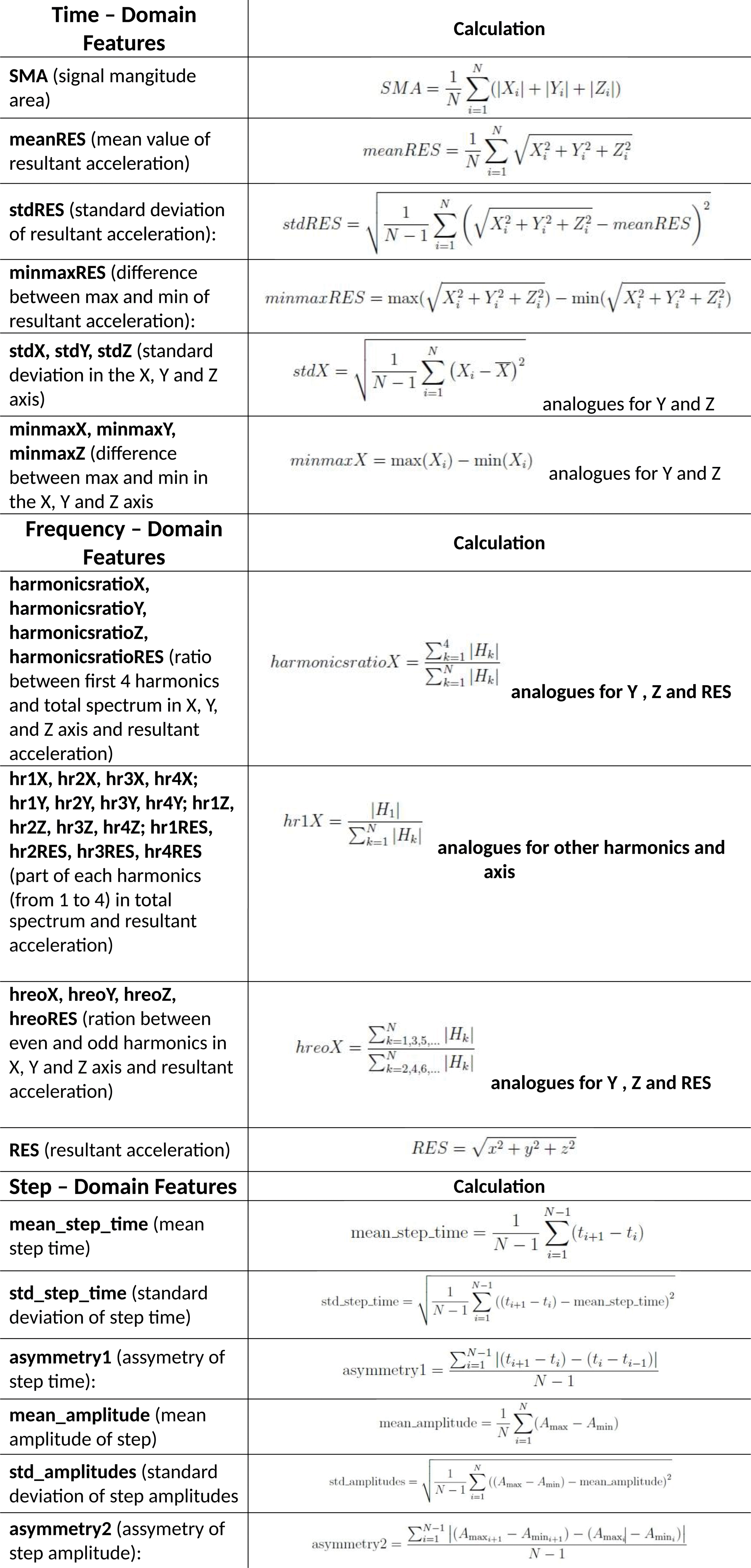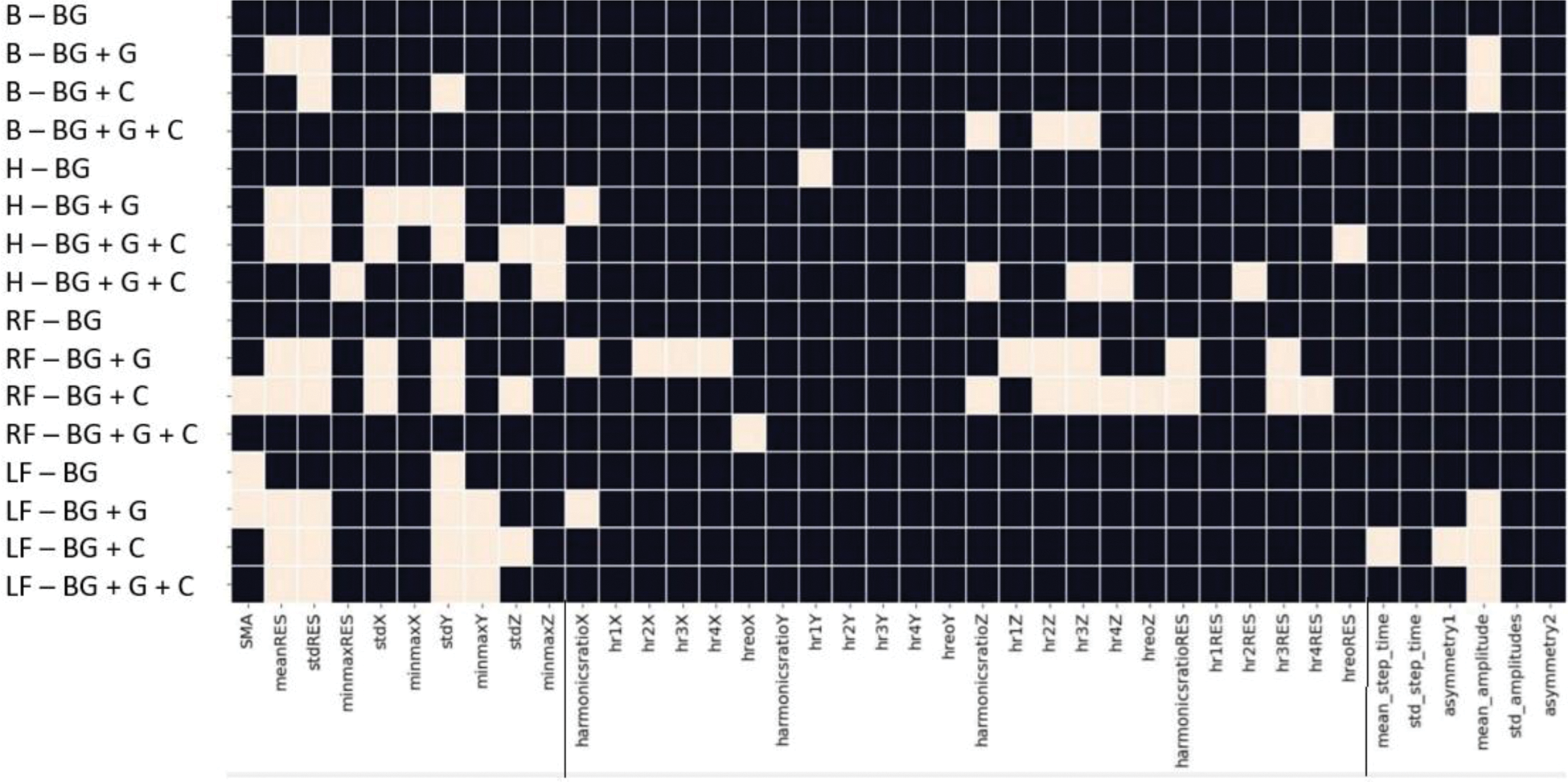

Background: Fibromyalgia patients often experience postural instability, making it difficult to maintain a stable posture while walking, which raises the risk of falls [1]. Factors like muscle weakness, impaired proprioception, and chronic pain can prevent them from effectively controlling and adjusting their posture during walking. Additionally, cognitive decline, influenced by symptoms such as pain, fatigue, and depression, further worsens motor function. In relation to daily activities, the dual-task paradigm serves as a proxy for everyday functioning, offering insight into the interaction between motor and cognitive abilities. Wearable sensor devices, such as accelerometers, can be used to gather data during various tasks. However, there is limited information on their use in fibromyalgia patients within this context.
Objectives: To find the potential digital biomarker through accelerometry-based assessment of dinamic balance and gait in dual-task settings in FM patients.
Methods: The 27 non-treated primary fibromyalgia (FM) patients (3 M, 24 F, 46,8±8.75 y) and 27 healthy age and gender-matched subjects (HC) were recruited for this cross-sectional study. All participants were wearing 4 tri-axial accelerometers (X, Y, and Z axis): one over the L4-L5 junction (spine), over the right anterior superior iliac spine (hip) and both ankles. Patients’ dinamic balance characteristics were assessed using a gait analysis accross four conditions (basic gait, with motor task, with mental task, with both). Raw data was sent through the Wi-Fi connection from accelerometers to the tablet and then to the central server for further analysis. After signal processing, time –, frequency – and step – domain features (Figure 1.) were analyzed and used for discrimination between FM and HC subjects.
Results: As shown in Figure 2, thirty different features are significant in distinguishing fibromyalgia (FM) from healthy controls (HC). Among these, most frequent were time-domain features: minRES (significant for all four sensors in three conditions), stdRES (four sensors and three conditions) and stdY (four sensors and four conditions), stdX and minmaxY (two sensors in two and three conditions). The other were frequency-domain feature hr3Z (significant for three sensors in three conditions) and step-domain feature mean_amplitude (two sensors in three conditions). In terms of sensor placement, the key features were primarily captured by ankle and hip sensors. Dual-task conditions showed that the gait combined with either a mental or motor task (but not both) provided the most valuable information, while basic gait alone was less informative.
Conclusion: The results from this pilot cross-sectional study indicate that the selected features could serve as potential digital biomarkers for identifying fibromyalgia patients during gait analysis. It appears that sensors placed on the feet and hip are more effective for data collection, with a clear advantage to using time-domain features. Regarding dual-task conditions, the findings showed that the optimal condition for analysis is adding a mental or motor task while walking to reveal any balance impairments. By combining foot-mounted sensors, the selected features, and dual-task conditions, this methodology could provide a fast and cost-effective way to assess the motor abilities of FM patients, potentially influencing diagnostic and therapeutic decisions while reducing the frequency of falls. Patients could perform this assessment in their home environment, with the results sent to their physician for further evaluation.
REFERENCES: [1] Carrasco-Vega E. PeerJ. 2022 Mar 21;10:e12908. doi: 10.7717/peerj.12908.
Time-, frequency- and step-domain features used for analysis.

Heat map of significant features (p < 0.05) after the Bonferoni correction.
Abb. B – back sensor, H – hip sensor, RF – right ankle sensor, LF – left ankle sensor, BG – basic gait, G – glass of water, C – counting (serial subtractions of 7 from 100)

Acknowledgements: This work was supported by a voucher (#Q322RSV45) from the European Alliance of Associations for Rheumatology (EULAR). The content is solely the responsibility of the authors and does not necessarily represent the official views of EULAR.
Disclosure of Interests: None declared.
© The Authors 2025. This abstract is an open access article published in Annals of Rheumatic Diseases under the CC BY-NC-ND license (